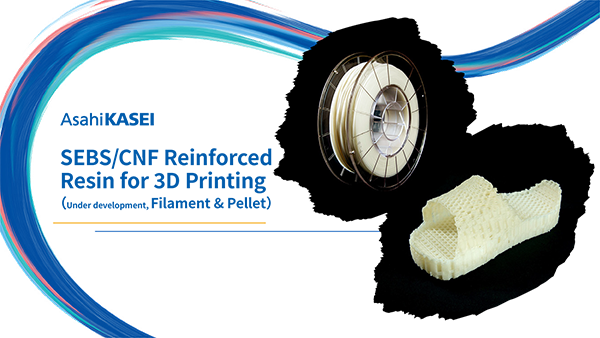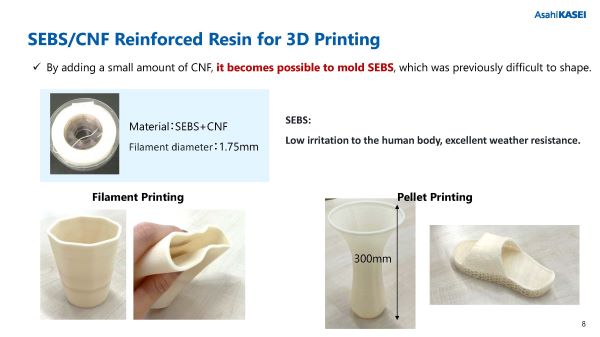SEBS/CNF reinforced resin for 3D printing Download slides
Adding a small amount of CNF makes it possible to mold SEBS, which was previously difficult to mold.


SEBS is a soft material with excellent weather resistance. By adding CNF, it becomes possible to mold SEBS, which was previously difficult to mold.
Asahi Kasei 's SEBS/CNF reinforced resin for 3D printers has excellent low warpage, dimensional accuracy, flexibility, and hydrolysis resistance. Furthermore, it is a material that can express a wide range of softness depending on the shape design. In addition, large items can be printed using pellet-type molding machines.
Failed to load form. Please reload the page.
Proposal content
Details can be found in the download document.
- Introduction of Asahi Kasei's CNF Reinforced Resin
-
- What is Cellulose Nanofiber (CNF) Reinforced Resin?
- Asahi Kasei CNF heat resistance
- Characteristics of CNF reinforced resin for 3D printing
- Introducing SEBS/CNF reinforced resin (filament/pellet) for 3D printing
-
- Adding a small amount of CNF makes it possible to mold SEBS, which was previously difficult to mold.
- The reinforcing effect of CNF reduces shrinkage and warping of molded products.
- Even large box-shaped shapes can be precisely molded without warping.
- The softness of the model can be adjusted by adjusting the internal structure.
- High hydrolysis resistance compared to commercially available polyurethane filaments
